
This content is protected against AI scraping.
Do you know when I last watched the TV show Friends?
Last Thursday. Four days ago. I watch it all the time. A year or two will go by where I don’t watch it, and then I’m back on it again.
The show makes me happy. There are a few things that haven’t worn well, but the good things about it are so good, I don’t care. It makes me feel like I’m twenty-six again. It reminds me that it’s okay to make mistakes and that every day is an adventure.
So it wasn’t at all strange that I was watching it while doing the elliptical on Thursday. What was strange, though, was that later that night, I looked up Charles in Charge video clips on YouTube. Charles in Charge is a 1980s show I never once watched, but I looked it up because I had the urge to see Matthew Perry as a kid on there. (Because I looked it up, YouTube is now serving me compilations of the openings to short-lived, forgotten 1980s shows.)
On Saturday when I logged onto Twitter, Matthew Perry was trending, and my heart sank.
Matthew Perry’s memoir was the last book I read last year.
A few pages in, I was sure that he’d actually written it, which one doesn’t expect from a celebrity memoir. The writing was very good, with some vivid metaphors. There were a few edgy lines that no ghostwriter, I thought, would’ve written.
I found out that, in fact, he had written it. His editor said he’d turned it in ahead of the deadline. Perry had a a couple of screenwriting credits, and, I learned, had frequently contributed lines to Friends, so it’s no surprise that he was a good writer.
The memoir is about his career and his relationships (he dated several famous, beautiful women, including Julia Roberts), but more than anything else, it’s a memoir about the Big Terrible Thing: his addictions. Perry’s addictive nature pre-dated Friends, and it was a monster. Right after the show wrapped, he should’ve been living a dream life—fabulously wealthy, handsome, and beloved by all. Instead, he was a hermit in his Los Angeles mansion, having drugs delivered to him.
It was a life no one would envy, and Perry would’ve done almost anything to be rid of his addictive nature. It seemed like his anxiety and his deep-seated sense of being unloveable were so acute that unadulterated life was deeply painful. Discipline and self-control were weak weapons against such a monster. His body sustained so much damage that I was genuinely shocked, but grateful, that he was still alive.
It seems so unfair that someone who brought happiness and peace of mind to so many struggled so much to find those things in himself.
Let me tell you about the first time I watched Friends.
I was in Kansas City and working at Shoebox, a humor division of Hallmark Cards which, at the time, was like a small business in its own building, separate from the main corporation.
I was dreamy and feckless. Although I was overjoyed to have a job that paid real money, having lived under the poverty line for several years prior, I often forgot to go to a meeting that began at nine a.m. every single day; someone would have to go fetch me. Without meaning to be, I was very grunge. I wore a vintage velvet gown to work one day, and the oversized flannel shirt I’d slept in the next.
I should cringe, but honestly? I loved the person I was back then. I feel like lately, as I shed layers of corporate conditioning, I’m becoming that person again.
The writers at Shoebox were hilarious. They had to be; it was their job. Every single day, they came in and wrote around ten, twelve, fifteen funny jokes. In conversation, sometimes I wouldn’t be able to laugh at a funny thing someone had said because I was still busy laughing at the last funny thing.
Several of us were in our twenties or early thirties. We went to the little company gym together. We began every morning drinking coffee around a kitchen table and joking and telling stories. (This was before we went to our desks, and before I forgot about the nine a.m. meeting.) I always chose the mug that read, The world: I now own it.
When Mr. Donovan and I moved from a one-bedroom apartment (haunted, but that’s a story for another time) to a slightly larger one that was so close to work, it was like a campus dorm, two of the writers helped my husband carry a sleeper sofa that weighed about a thousand pounds up three flights of un-air-conditioned stairs on a one-hundred-degree August day. That’s what good friends they were. Pivot, indeed.
I first watched Friends at work with them. A writer named DeeAnn who was a couple of years older than me, and whose older brother was also one of the writers, told us about this new funny show and brought in a VHS tape. We all watched at lunch and agreed that yes, it was funny. The Monica character seemed to me to have been modeled after DeeAnn herself, with her sense of decorum, her crystalline beauty, and her exact ways of delivering sarcastic quips. As we watched, it may have been mentioned that I was a little like Phoebe.
This is how I watched the first two or three seasons of Friends, before I was transferred to another division of Hallmark. There was no Internet where one could talk to strangers about the show; we just talked to each other. Back then, the writers didn’t even write the jokes on computers. They hand-wrote them on 3 x 5 index cards, folded in half to make tiny greeting card mockups: the setup on the front, usually with a sketch, and the punch line on the inside.
It feels like this was three years ago. Events in the past don’t stay in the correct order in my memory. For instance, Los Angeles, which we left in the spring of 2021, is deep in the hazy past, more like a fever dream than like three years of my recent lived existence. Anyway, in my mind, the show became intertwined with a happy time in my life, and later, it wound itself around other happy eras, too.
DeeAnn died when she was in her thirties. I’m still mad about it, and I still think about her all the time.
Matthew Perry created the Perry House…
It was a home for sober living for addicts in recovery. It seemed to me in the memoir that in the past few years, he’d found a true sense of purpose in trying to help other people.
He went on talk shows to discuss the book and his experiences as an addict, which I’m sure helped a lot of people understand that they weren’t alone. He said that he hoped this would become part of his legacy, and of course, it has.
I wish so much that he could’ve lived a few decades in sobriety. I’m sending good wishes to his friends and family.
When you get older, your former selves don’t go away. They’re still inside you; you can pull them out whenever you like. As writers, we can remember that sometimes a character arc is someone returning to the person they used to be. I’m thinking a lot about how I want to be that free person I was at the beginning of Friends (minus, of course, the meeting-time flakiness); the most genuine version, maybe, of myself. And I know it’s not an original thought, but I’ve been thinking about how life goes so fast, and you want to find those moments of joy—and hilarity—every day.
Did you watch Friends?
Did you love it? Hate it? What were you like in your 20s…or are you still in your 20s, or younger? Let us know in the comments!
I hope you know how wonderful and innately lovable you are. Thank you for being a friend here with me. 🙂 I appreciate you! Have a great week!


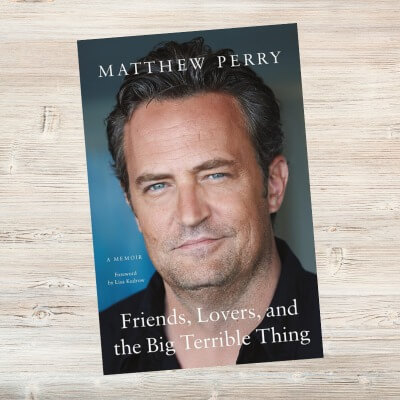







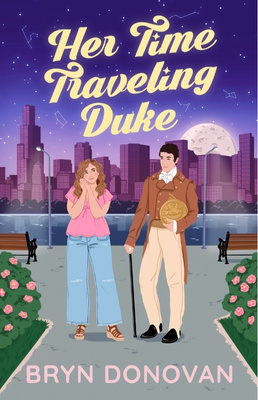
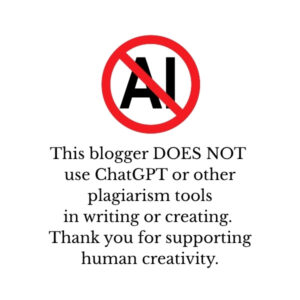

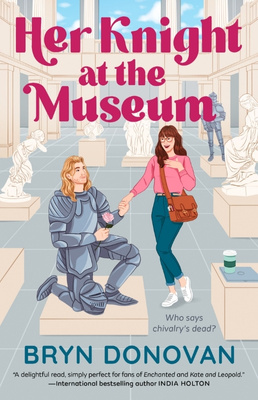
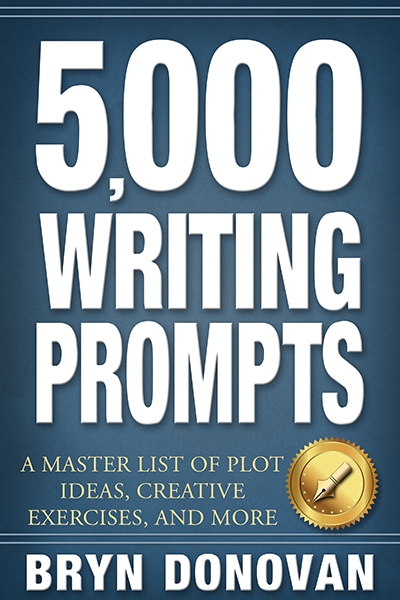

I loved Friends when it was on, and Chandler was definitely so relatable, the awkwardness, the foibles, the false bravado that hid a gooey center…My mom has been going through dementia since maybe a year, maybe less into the pandemic. Can’t tell for sure, but it’s worsening by the week. Every time I’d go to their house the past couple of years during the day, Friends would be on, unless it was time for Days of Our Lives, which she and my dad watch religiously. Cracks me up. She watches Friends, I think, because of the humor, because you could fall onto the couch in the Central Perk and be safe. My kids who are 17 and 21 started watching the show at her house and love it, though we’ve had plenty of conversations about the homophobia and lack of diversity. Friends makes my mom smile while she’s slipping away and for that I’m grateful. What you said about Matthew Perry sounded so much like what we said about Robin Williams, and it makes me so sad thinking about how the people who make us feel better, are struggling so much! It’s not fair. In order to be funny, to entertain, one should not suffer in silence. I feel the same about the musicians we’ve lost. Anyway, thank you for sharing your thoughts and Shoebox was my go-to for every occasion. The edginess and hilarity was awesome. I wonder how many of your words Id read back then! And there are worse things to be compared to than Phoebe. She’s a treasure.
I love how you write about Chandler: “the awkwardness, the foibles, the false bravado that hid a gooey center”…that’s perfect.
I’m so sorry to hear about your mom. That’s so difficult. Friends really is a comfort show. Robin Williams really broke my heart, too…I loved his work so much!
I’m tickled that you used Shoebox cards. And yeah, one could do a lot worse than Phoebe. Thanks so much for your comments!
What a beautiful tribute to Matthew Perry. I, too, watch Friends all the time and in phases I watch it to fall asleep at night. I am sad MP didn’t get to live years in sobriety as well. Thank you for your beautiful writing. I am also Phoebe and I’m super flaky about meetings!
Jill, I’m always saying this, but you and I have so much in common 😀 We Phoebes have to stick together. Thank you for reading!
I really enjoyed reading this post. I’m older than you, so it took me back to a more difficult time, when I was thirty, with a toddler, and my marriage fell apart. Watching Friends and Seinfeld on Thursday nights was a saving grace for me. I looked forward to this escape every week, while working full-time as a teacher, dropping my child at daycare, marking kids’ work and preparing lessons all day Sunday, rinse and repeat. Matthew Perry was clearly the smartest Friend and his delivery and timing were perfect. Such a sad ending for him.
Hi Naomi! Oh, my gosh—that must have been such a difficult time to get through. I can hardly imagine. You’re a survivor. 🙂 How nice that you had that must-see-TV reprieve near the end of the week. Thanks so much for reading!
I loved watching friends, even though I was much older than the charcters in the show. But most people could identlfy with at least one character. I was a Monica. for the most part. We are now retired and we still watch the reruns and have a chuckle. Losing Chandler is a huge blow to all the fans. May Matthew Perry rest in peace, a peace he didn’t have in life.
Hi Darlene! That group would’ve fallen apart immediately without Monica! Yes, I hope and believe Matthew Perry’s in a better, more peaceful place.
Thanks, Bryn. Not my generation, but I know who and what you’re talking about.
How sad about Matthew Perry. I hope his next life will be at least as successful, but without the bad karma that made his latest one so miserable.
Hi, Annie! Yes, I feel exactly the same way. Thank you so much for reading!
Great tribute, Bryn. I was in law school when “Friends” had its run. Every week, a bunch of us would get together to drink beers and watch the show. It feels like the end of an era. RIP.
Hi Tom! Oh my gosh…that sounds like the perfect way to unwind in law school, actually. 🙂 Thank you for reading!
I was working as a uniformed soldier full time for the Ohio Army National Guard at the height of the popularity of ‘Friends.’ I worked in an office with four other people, three of whom were around the same age as me and a woman several years our senior. Every Friday morning would begin with my co-workers, if they worked that day, talking about the previous night’s ‘Friends’ episode. Sometimes these discussions would carry into Monday, if someone was off on Friday. I didn’t watch the show and, listening to their discussions, thought it was an evening soap opera. I was dumfounded when I was told it was a sitcom. After weeks of listing to them go on and on, I finally sat down to watch it and I was hooked.
Back then, there was no internet, no streaming… You had to wait for syndication or off season reruns to catch episodes you missed. It took over a year for me to catch up. We had VCRs then. I tried to record it if I knew I was going to miss an episode. Heaven help my former spouse if he recorded over it before I finished an episode I missed!
Rest in peace, Matthew Perry. You’ll be missed!
Ann, oh my gosh—I don’t think I knew you served? Thank you for your service! That is so funny…I can imagine it sounding like a soap opera in discussion 😀 YES, I remember the reruns, and the recording! Good times, hahaha. Thank you so much for reading, and for sharing memories! Hope you have a great week!
I was not a Friends fan, but my mother and sister watched it religiously. I last saw an episode last week, in the nursing home where my mother lives. Now as then, Chandler was the most tolerable character. My heart breaks for Perry, and I hope he’s found peace.
Hey there! Aww, I’m glad it was on in the nursing home, since your mom was a fan. <3 It really is so sad! I think Chandler was a lot of people’s favorite! Thanks so much for posting.
I watched FRIENDS back in the day. It was mostly relatable as someone in the same Gen-X age group, though I was newly married at the time.
Last time I watched FRIENDS was Friday night. We started watching it again during the Pandemic. It was our comfort show.
I was tweeting/X-posting Saturday night and I saw his name trending. I felt a sinking feeling. I didn’t want to believe TMZ, so I dug a little deeper and found another source and verified the info. I almost gave up tweeting, but holiday movies are another thing I enjoy, and I didn’t want to cry right then. But, at that moment, I couldn’t be more sad. Still have a tinge of sadness.
denise
Hi Denise! Ohhh, you totally get it. I know—I didn’t want to believe TMZ, either! I am also still sticking around with Twitter, although I’m not scrolling quite as much. The holiday movies are such a comfort, too. 🙂
The words are still trapped in my throat and my fingers. I just can’t find the right words because… well, it’s hard. It makes me want to scream to the top of my lungs, you know? I’m still waiting for the news that it was just a nightmare and he’s not gone. We all lost a friend, indeed, and, like you, I wished he would have lived so much longer, and had the time to just… live. He was loved by so many, and sadly, I don’t think he had the time to appreciate how much love he had awakened in the hearts of people he’d never meet.
It’s just so hard! I hate it so much. I really hope that there were times when he realized just how much he’d given to the world!
I LOVED Friends, I was the same age as the characters and could relate to all of them on some level. I was a little bit Monica and a little bit Rachel. I had an on and off again boyfriend for many years, and I was always rooting for Ross and Rachel, even if mine never worked out. At the same time, I also always wanted Chandler to find his HEA and I liked it when they ran with Monica for him. This show became and still is in many ways like family or friends and this loss hurts. I feel like I have lost a close friend. After my dad died a few years ago my mom and started watching Friends together, she loves the show too and her favorite episode, was the one where Monica puts the turkey on her head and Chandler tells her he loves her. I actually got my mom a Friends blanket and some figurines for Mother’s Day this year, and she loved it. I was sick last night, my mom stayed up until 2am with me, and we watched Friends and a special on Mathew, that was on at 1am, it was an older program, but we had never seen it. May he rest peacefully and know that he touched so many lives.